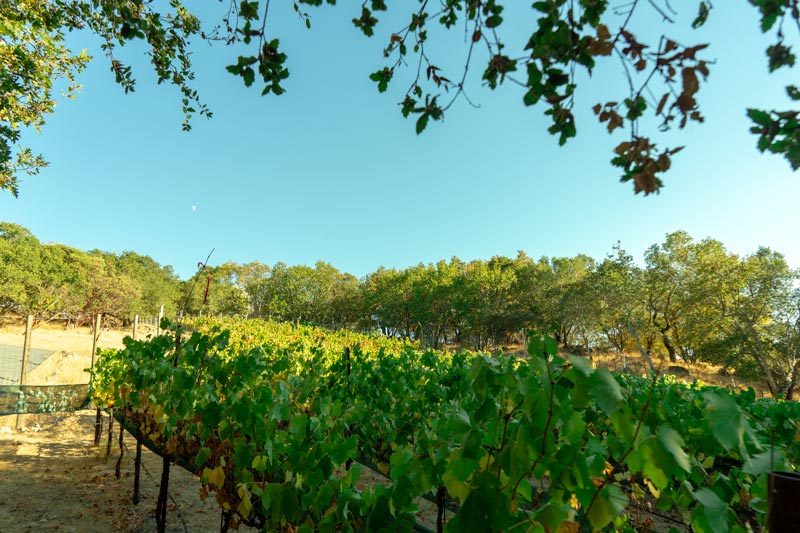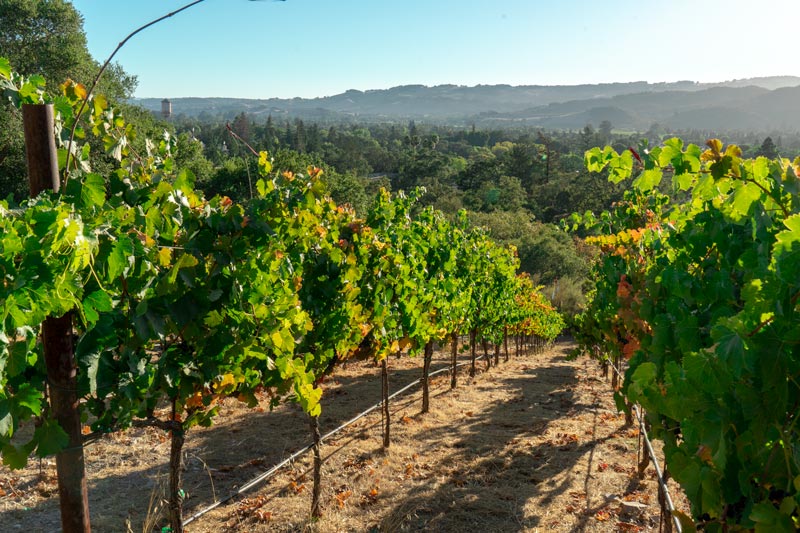Vineyards
Helicon and The Hesperides
When I planted the vineyards here, neophyte or not, I knew enough to intuit that Syrah would forgive the errors of a newbie, and I was right. Overall, Syrah loves it here. Three other varietals went in as experiments. Viognier struggled and is now gone. Grenache tests us every spring, being prone to shatter, then rewards us in the blend. Mourvedre, after years of quirks and underperformance, is now so impressive we’re now going to graft it onto problem areas. Viticulture is a protracted process of learning and adapting — trial and error, if you will. Ultimately, the ground — the terroir — tells you what you must do.
Because Star Crest is so small, we can lavish undue attention on every vine. All vine work is done by hand — by my hands, for such operations as suckering, thinning and green harvest. We stopped using RoundUp years ago; even before then, we qualified as “sustainable.” I clear the drip rows and yank up the broadleaf weeds with a trusty three-tong claw. The steepness in some sections rules out the use of tractors. Come harvest, naturally we do that all of that by hand, and in 2018 we began the practice of separate passes for different varietals to pick at optimal ripeness.
Currently all of the Syrah is clone 877. We are eager to introduce at least one other clone here in the course of future fill-in replantings.
Helicon
Home of the Muses
Helicon offers a great example of the challenges of farming on a slope. The vines run longitudinally (per modern regulations in the county, which prohibit terracing) facing west-northwest. Those at the top struggle to produce clusters in the highly compacted soil. Those at the bottom, growing in loam, get a little too verdant — and Syrah is a vigorous varietal. We work hard to promote uniformity in this vineyard, which happily for us has a large sweet spot in the center we’re striving to expand. The original planting included three long rows of Viognier which spent the ensuing decade chronically underproducing, either from proximity to the legacy forestland separating this vineyard from The Hesperides to the south or a fundamental mismatching of varietal and soil. In 2018 we made our initial foray into grafting, converting these long-suffering plants into what we hope will be thriving, productive Syrah.


The Hesperides
Nymphs of the West
The Hesperides consist of two blocks separated by a lovely grove of oaks too lovely to chop down. The north block runs up and down the hill (about a 26% grade) while the south block, covering the most level land we have planted, runs laterally. The old timer who ripped these parcels almost dejectedly referred to it all as “a rock field,” and indeed, some forty ten-wheeler loads were required to remove the rubble from what amounts to about a single acre planted (including Helicon), with some boulders the size of kitchen islands. Fret not, Rhone-wine aficionados: just below the topsoil we still have rocks forever. In some places workers used jackhammers to drill the holes for the rootstock. A vexing vein of limestone angles under the longitudinal rows of The Hesperides North (where the Grenache grows), and even the weeds struggle to survive here.
In The Hesperides South our trial planting of Mourvedre spent years going nowhere, especially not into the finished wine, but a couple of years ago, after some sage coaching with respect to pruning and irrigation, it turned the corner. Now (knock on budwood) it gives us magnificent clusters the size of softballs. We plan on propagating it into parts of vineyards that have been, ahem… underachieving.
